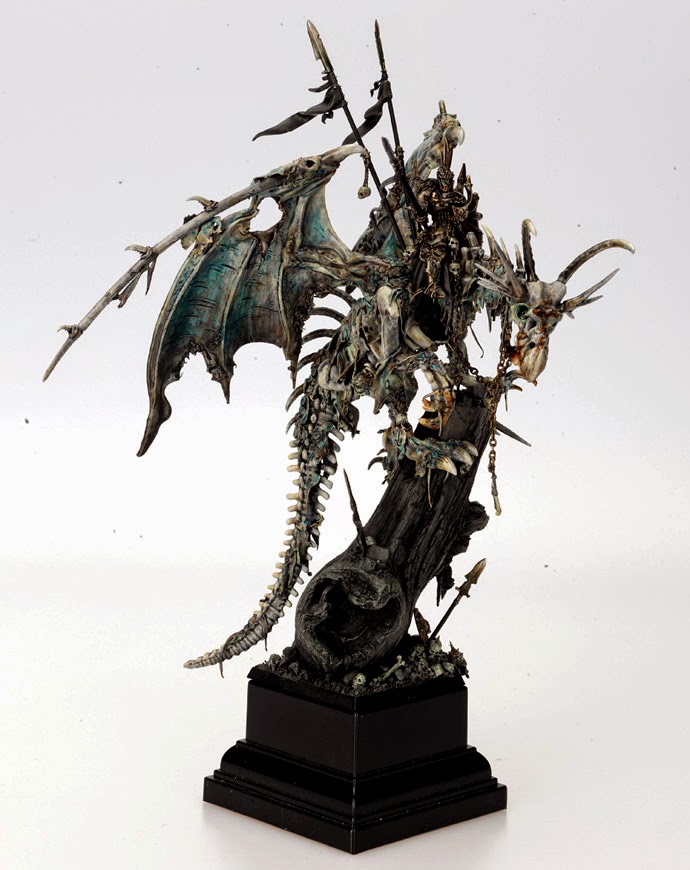

One time when I was looking for inspiration for Undead models, I came across Julian Bayliss‘ work. I was blown away how sinister, dark and extremely detailed his miniatures are. Not only the painting is so superb, but the conversions are too. I invited him to be a guest here on Tale of Painters, to which he gladly agreed. Over to Julian after the jump.
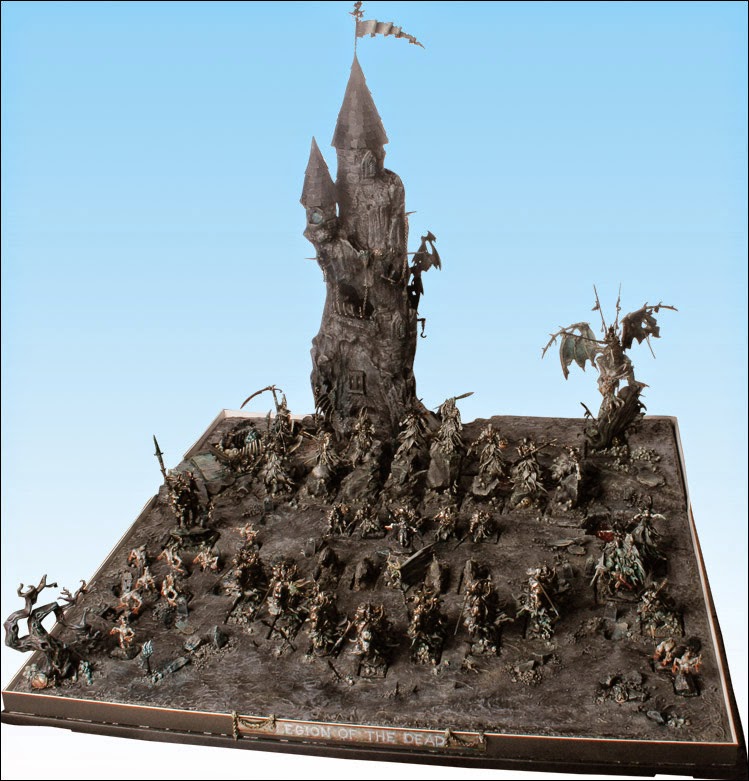

The legion of the dead started as a single figure entry for golden demon UK. I always thought the undead range looked a bit toy-like and I wanted to make a figure that looked quite scary and evil.
Once I had finished the first figure I just had to make a regiment of these! Really fun to make and I had loads of ideas I wanted to create.
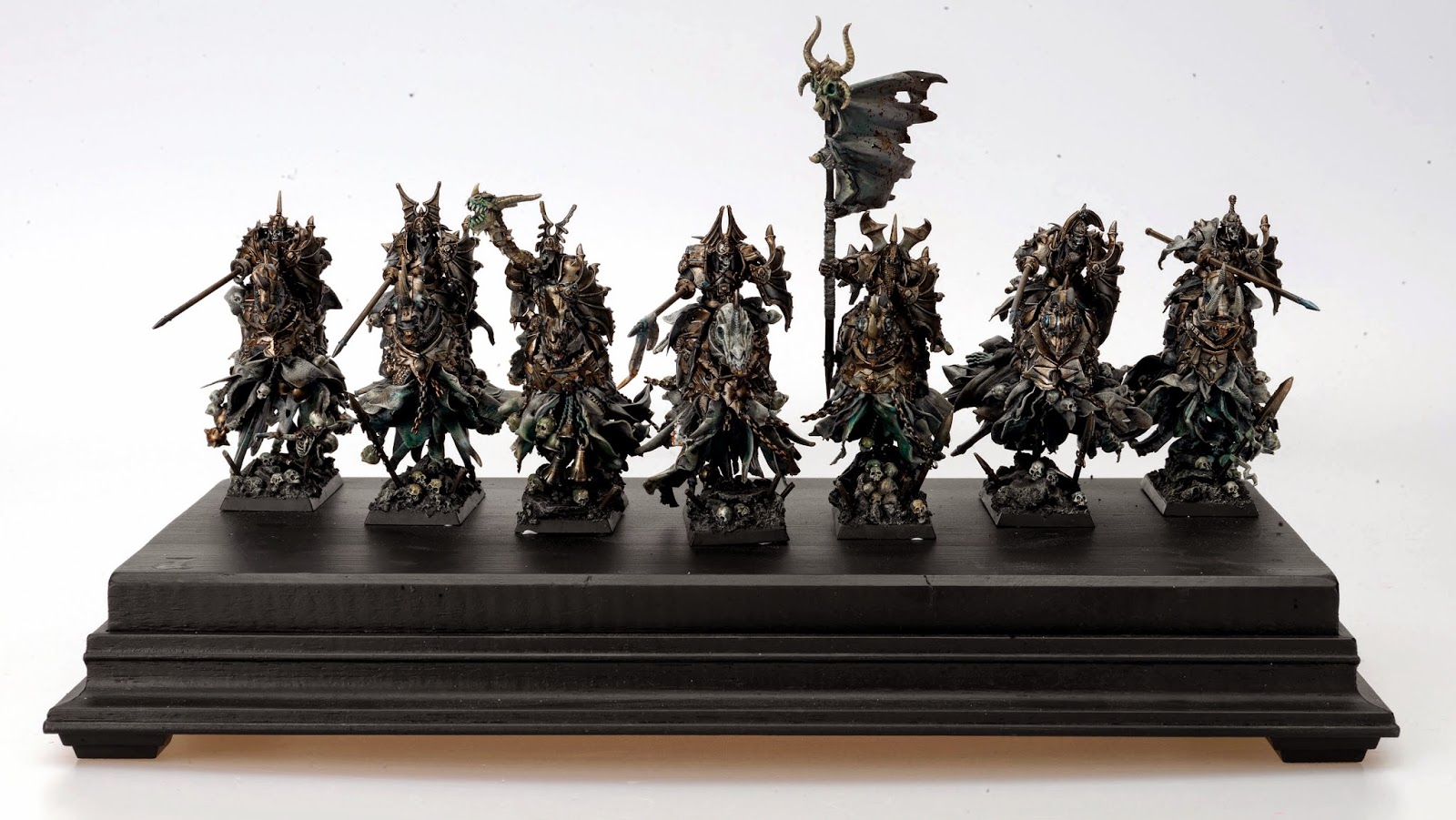

The 3 Slaneesh styled ladies all started out as the 54mm inquisitor assassins Sevorina and Sevora. Again I just started out with a single figure, had so many bits left over and ideas. I made 3, which is also the number of gnarlocs I had. The idea was to make a nomadic inquisitor scaled female adventurer. When i finished putting the bits together the figure looked like it needed something, a mount. I came across the gnarlocs in my bits box, bought for some long forgotten project that didn’t happen and they seemed to compliment the figure perfectly. A nomadic female who rode across the desolate wastelands surviving on what she can steal or scavenge. Well she needed some friends for her journey, so I made 2 more!
I used a very dark muted colour scheme, I don’t usually make many 40K type figures, as I prefer fantasy. But there are elements about the models that cross over the boundaries of the 2 worlds. In my mind I see the 40K universe even darker than the warhammer fantasy.
I introduced some purple mixed with greys to bring in another element. I also use gloss varnish to make the catsuits look like rubber/latex.
Using a thicker water effect is also a good way of adding realism to goggles, bionic eyes etc Apply it with a tooth pick and build up in a couple of thick layers. When it dries it looks like a shiny glass effect. I like effects as they can hide imperfections in painting standards. UHU glue is one of the worst glues on the market for sticking, but ideal for creating drool, it is so naturally stringy that it creates the effect with minimum effort! I recommend applying it with a tooth pick as it comes out of the tube in lightening speed and will cover your model in seconds. Squeeze a blob out on some card, scoop it up on the end of the stick, wipe it on the area you want the drool to start from, then very gently tease out the glue to a lower point where it will stick.
The main bits for the standing regiment are mostly flagellant heads, choas knight torsos and arms and then milliput robes with added details of skulls and chains, again mostly from the flagellant sprues. Colour scheme for the army was simple. I used a limited palette of colours across the whole army to unite the models into a single army.
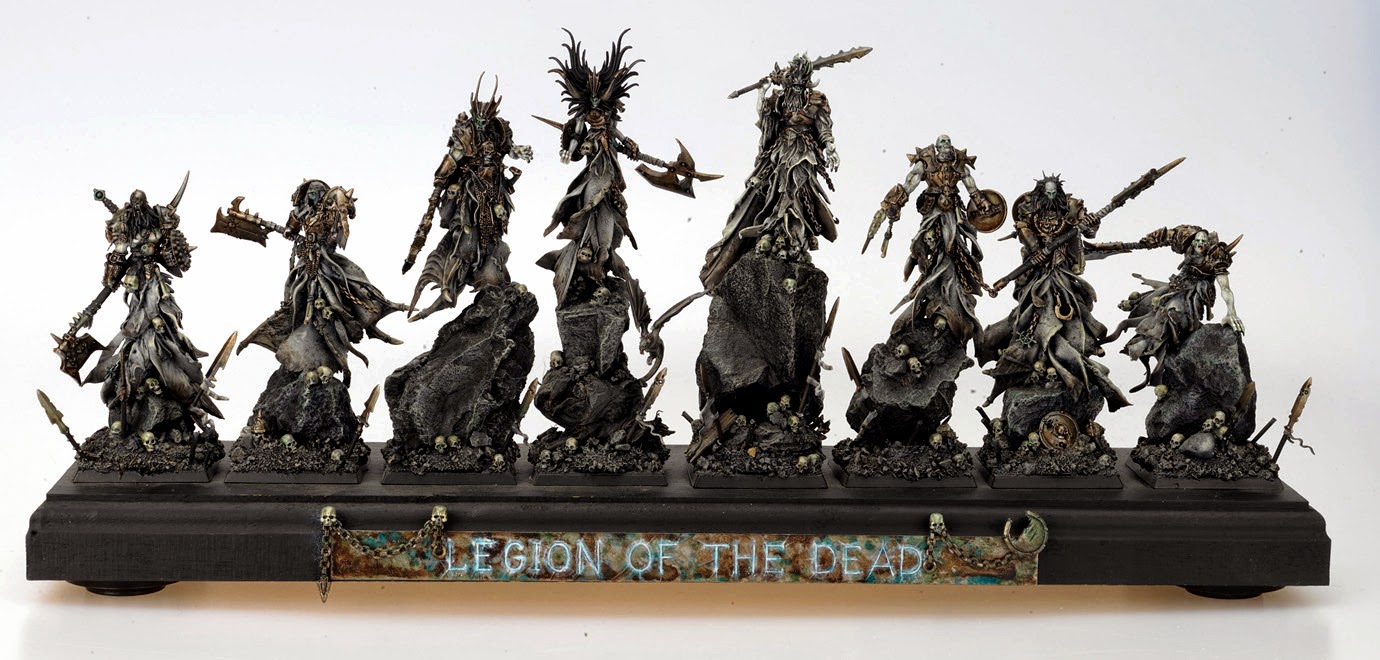

Grey is my favorite starting point, which I used on the robes and bone. From this I either highlight lighter colours on top, usually a blend of grey and rotting flesh or wash darker shades over the area, devlan mud and badab black. Often the finished area is a mix of both techniques until I achieve the result I want. The bone areas I highlighted with bleached bone and white to stand out from the robes. To give a ghostly feel to the figures I used some turquoise ink around the edges of the robes.
The armour is also simple. Boltgun metal. When dried I use a mix of armour wash and brown ink watered down and paint over the whole armour. The wash sits just where its needed and does the work for you, giving an antiqued weather look. The overall army got a lot of positive attention and seemed to match many peoples image of what an undead army would look like.
I should say that I don’t think of myself as a painter, more a modeller, who has to paint to finish the model. Whilst painting I am usually rushing to get on to making my next model. So any techniques that I use will not help anyone win a golden demon, but I have found that people recognise my style of painting amongst lots of other painters. This I find rewarding, it is a compliment I feel to have a style of my own (not always liked, but having the courage to try something different from the norm-eavy metal!)
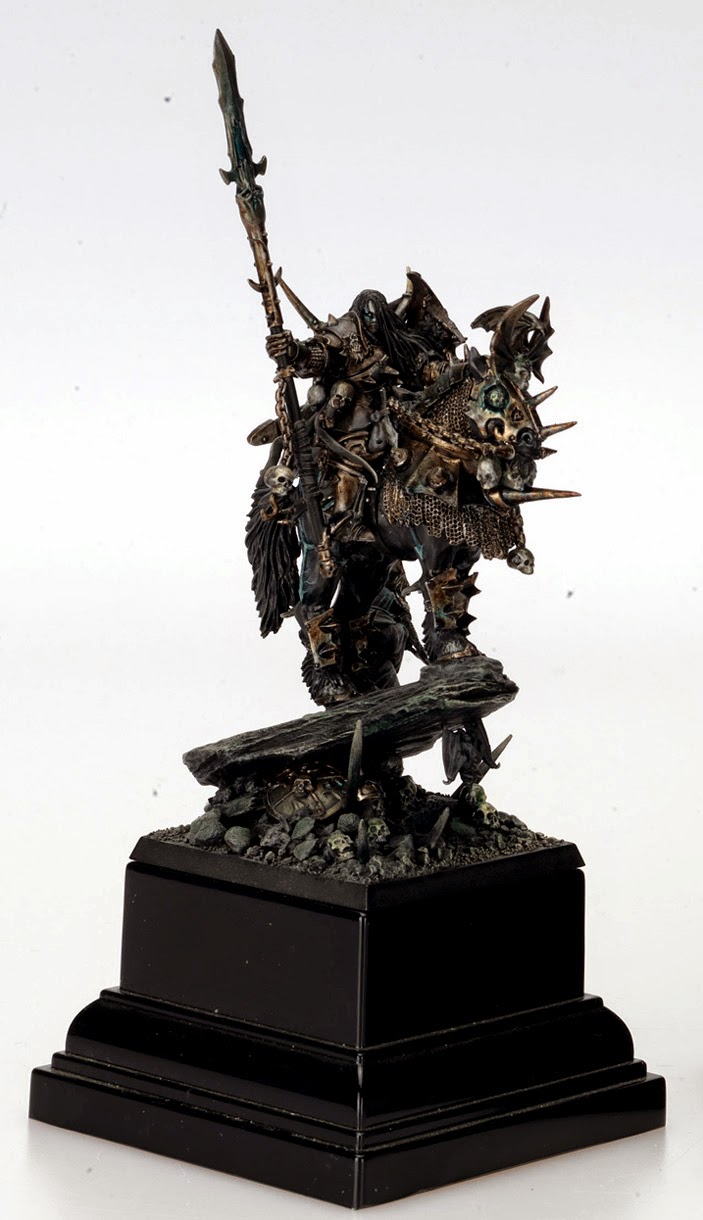

My inspiration, apart from John Blanche of course is taken from the black and white pictures in the army books. They seem to have more atmosphere, movement, expression than the colour pictures and this of courses influences my choice of colours. Dark, earthy, tones that look like they have been through a war. I have tried in recent months to use brighter colours but I have to paint straight over them, it is blasphemy for me to use prime colours! Lol
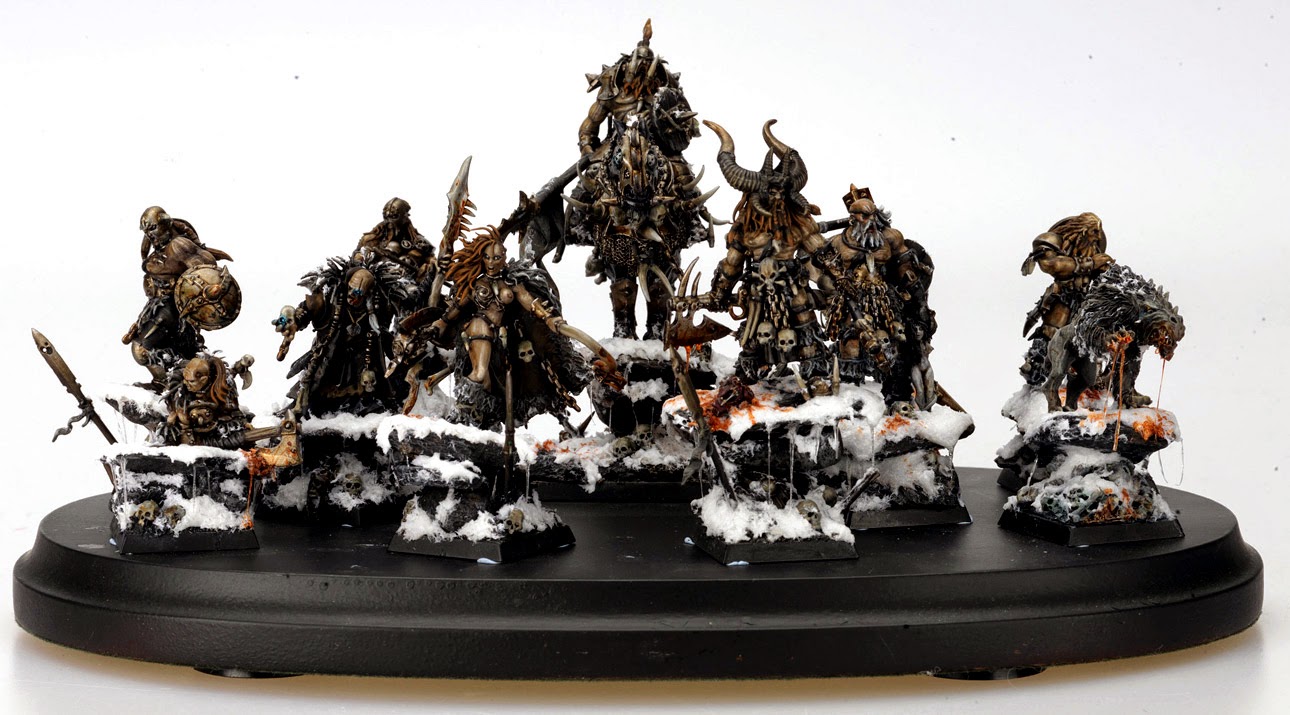

For my chaos barbarians again I used greys and earthy tones but more browns than the undead, giving a warmer overall look to them because of this. All the models are converted to give them a unique feel. The armour was base coated gun metal and then layered in my wash mix. The flesh was base coated scorched brown and then whilst wet I added some tanned flesh. Then tanned flesh/codex grey mix to highlight. When dried I added some more highlights with bleached bone. If the highlights are too severe i rely on the devlan brown wash to tone all the colours down and blend them in. I sometimes add the green wash into the recesses of the muscles whilst the devlan is still wet. If you look at the painitngs of Frazetta and Vallejo and look what colours they use on the flesh to add depth you would be surprised. I use ogryn flesh, baal red, all sorts till I am happy with the result. Don’t be scared of making a mistake, you can always paint over it! The hardest thing about using limited colours that have an equal tonal value is making the different parts of the figure stand out. If i use the same base coat for several areas of the model, charadon granite for example, then to make the parts stand out I will use different washes and highlights. The tone remains the same, but the depth of colour will vary. As much as I don’t get much pleasure from painting, using washes is different. A much more free approach to painting and almost experimental each time you apply the paint as you don’t have absolute control over where the paint will finish up or the consistency of colour where it pools…Great stuff!
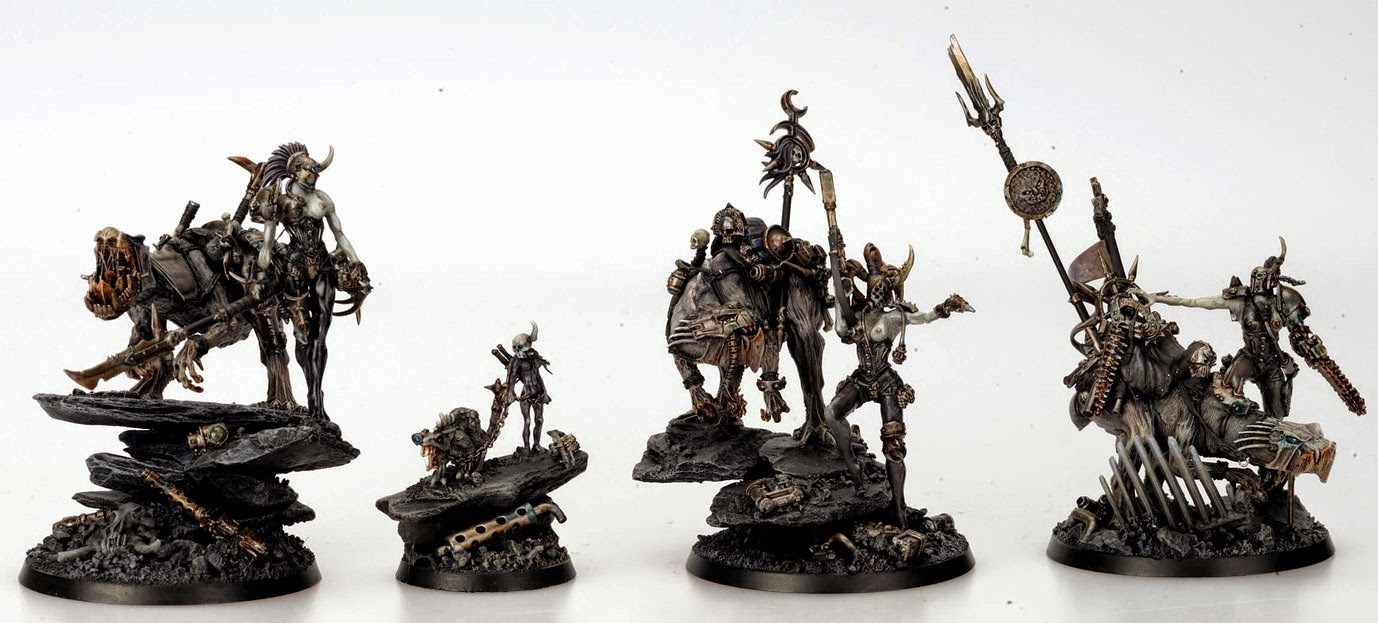

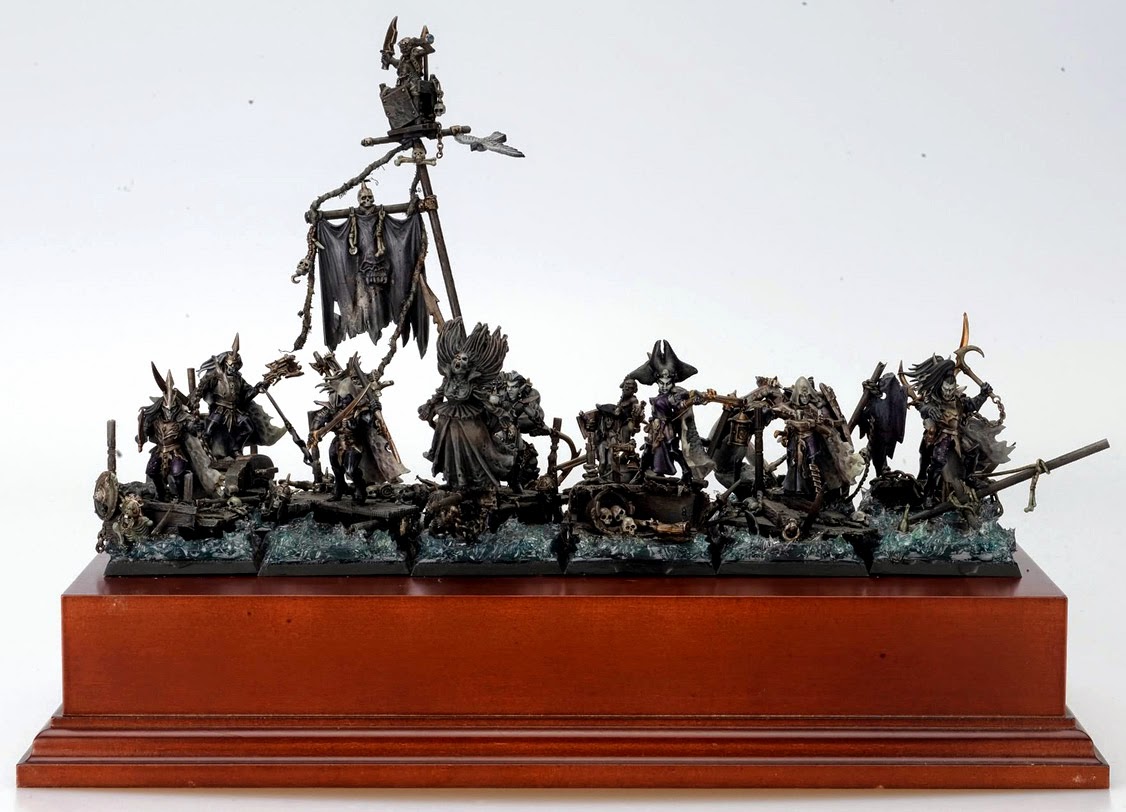

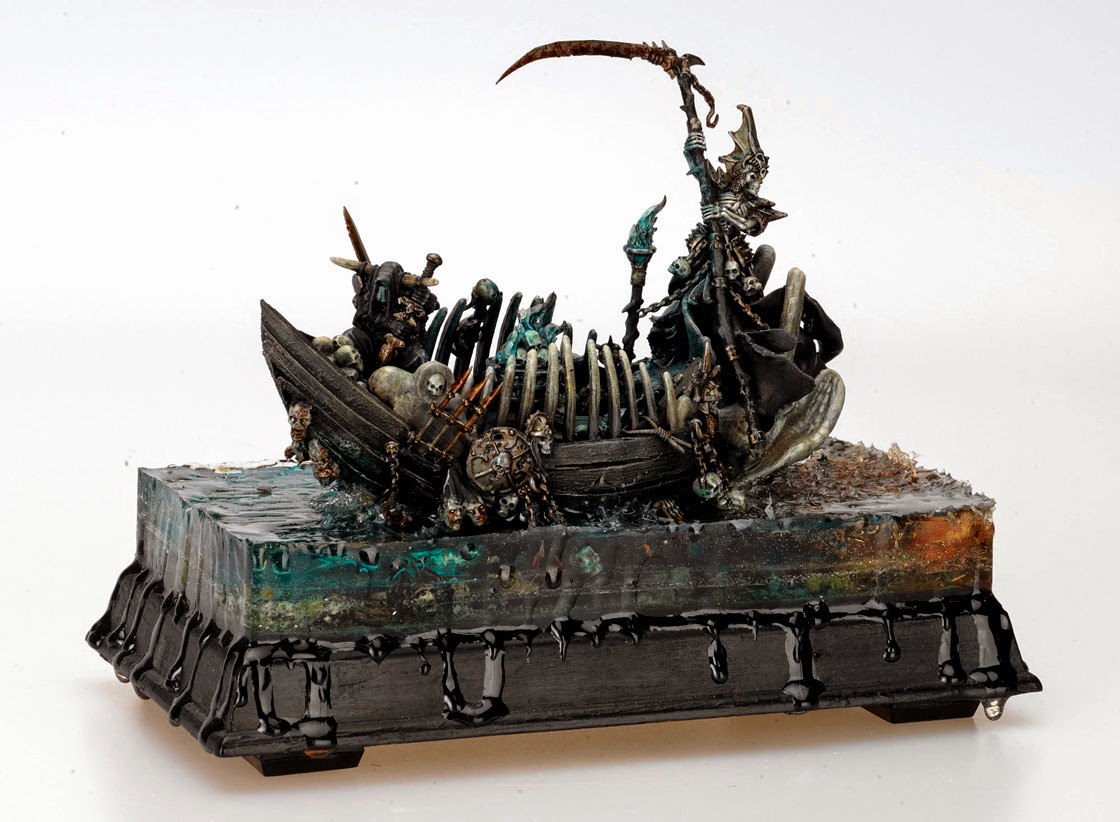









sorry my name is cameron by the way.
Anonymous
hi julian. amazing work! truyly inspiring! can you please to tell me how you made the skin tones for the undead please?
Hi Cameron, sorry for late reply, just came across your message after some nostalgic looking back at the blog lol. Painted along time ago now, but i think i used Bleached bon as the base colour with rotting flesh and then highlighted with white and bleached bone and washed with badab black and brown washes, all from the older paint range, not sure what the equivalent colours are now! Sorry. Hope that helps. All the best, Julian
hi julian. amazing work! truyly inspiring! can you please to tell me how you made the skin tones for the undead please?
This showcase got me back into the hobby again, trying my best to develop my own style but Ive got a lot to thank you for! This article as well, it lead me off the beaten path ad into the darker worlds of warhammer where I discovered my own style I think. Now I only need those shields that you've used for the knights and the vamp on dragon 🙂
Tremendous work. Inspirational. Just wondering what you used to contain the water effects for the square base. Did you use a custom mold of some type?
Hi Justin, i used clear plastic to make the frame, same sort as the blister packs. The idea was that if the frame wouldn't come away from the resin then it wouldn't matter as it was clear! Lol. I added the drips when i removed the plastic, think i over did this a bit!
Julian, been a fan of your work for many many years, seen your unique modelling and painting style be recognised and appreciated at Golden Demon too. To be so creative is a gift well used. Thanks for sharing.
One question. Where are the Yetis? Hm? The Yetis are AMAZING!
Bro
HOLY GRAIL!!! I'm spechless �� cazzo!!! The "Marauders" group is my favorite…and that sort of Caronte is cool as hell ������
Simply stunning work.
Is encouraging me to get back out there and start painting again
Go for it! Lol
Be great to think i had inspired someone to start painting again!
Incredible, really, incredible and fantastic work! I love it. Especially the minis with snow on the bases (I like any kind of winter scheme). How did you do the snow? Mine always looks crappy… Anyway, keep up the standard and scheme you've been doing, it is awesome!
Tomas
Hi Tomas, thanks for your kind words!
The snow effect is achieved with a snow flock (any make) mixed with a water effect and then applied with a tooth pick. You can place it accurately on any part of the model/base and the water effect acts like an adhesive, so no glue needed! Simples
Thank you very much, Julian!!!
Will try the snow as per your recipe on my next batch of minis.
Best regards,
Tomas
Thanks to all who have left such positive comments, they are very much appreciated. So pleased you like my models!
Hey many thanks Julian 🙂 I've been a huge fan of your work since finding it. Awesome stuff.
Absolutely fantastic and enjoyed the read. Would love to see more.
These models are fantastic, the conversion using the mounted chaos lord if my favorite.
Gorgeous
Woah. Unreal. A feast for the eyes.
Amazing models, would love to see some of your latest stuff
Stunning work. absolutely love it.
These models are absolutely beautiful. Thanks for also sharing an insight into how you work.
Just truly amazing, great stuff! =)